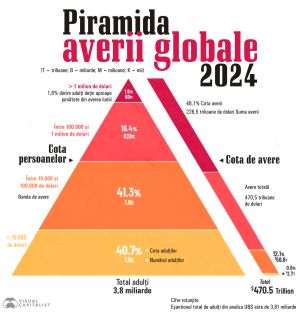The pandemic has had a significant impact on the cultural sector. The latest data shows a decline in the number of theatergoers and cinema attendees in recent years. The "Cultural Consumption Barometer 2022: Cultural Participation and Democratic Perspectives," released by the National Institute for Cultural Research and Training (INCFC), highlights, among other things, a decrease in attendance at theater performances and cinema screenings compared to 2019. The study, which assesses changes in cultural consumption practices and analyzes the relationship between culture and democracy, was launched during the 33rd edition of the National Theater Festival (FNT). According to the authors, the Cultural Consumption Barometer 2022 assesses changes in cultural consumption practices, emphasizing its characteristics among young people, and, for the first time in Romania, examines the relationship between culture and democracy. The data provided confirms the trends identified during the pandemic, including a predominant shift in cultural consumption toward online and non-public spaces.
According to the barometer, the effects of the pandemic on cultural consumption in public spaces are considerable, with the only increase being a 14-percentage point rise in visiting historical monuments or archaeological sites at least once a year (59% of respondents in 2022, compared to 45% in 2019). Decreases in cultural consumption in public spaces include: theater attendance dropping from 29% in 2019 to 20% in 2022, cinema attendance decreasing from 35% in 2019 to 26% in 2022, library visits for reading/borrowing books decreasing from 28% in 2019 to 17% in 2022, and museum, exhibition, or art gallery visits declining from 38% in 2019 to 30% in 2022. Another aspect highlighted is that beyond the pandemic context, the declines in cultural consumption in public spaces can also be explained by the accentuation of cultural consumption barriers, affecting all consumer categories.
The study also analyzes cultural activities in non-public spaces, activities practiced online, and the connection between cultural consumption practices and democratic participation. This edition of the Cultural Consumption Barometer, the 18th in the series, was released after a three-year hiatus due to the social and economic effects of the COVID-19 pandemic. During this period, from 2020 to the present, the Barometer was replaced with studies measuring participation trends. The 2022 Cultural Consumption Barometer study is based on an opinion survey conducted by the Romanian Institute for Evaluation and Strategy (IRES) in September-October 2022, on a nationally representative sample. The approximate sample size is 1,035 individuals, with a maximum margin of error of +/-3.1% at a 95% confidence level. Questionnaires were administered using the CATI method, on a simple, random sample, by generating valid phone numbers in Romania through the Random Digit Dialing (RDD) method.






















































